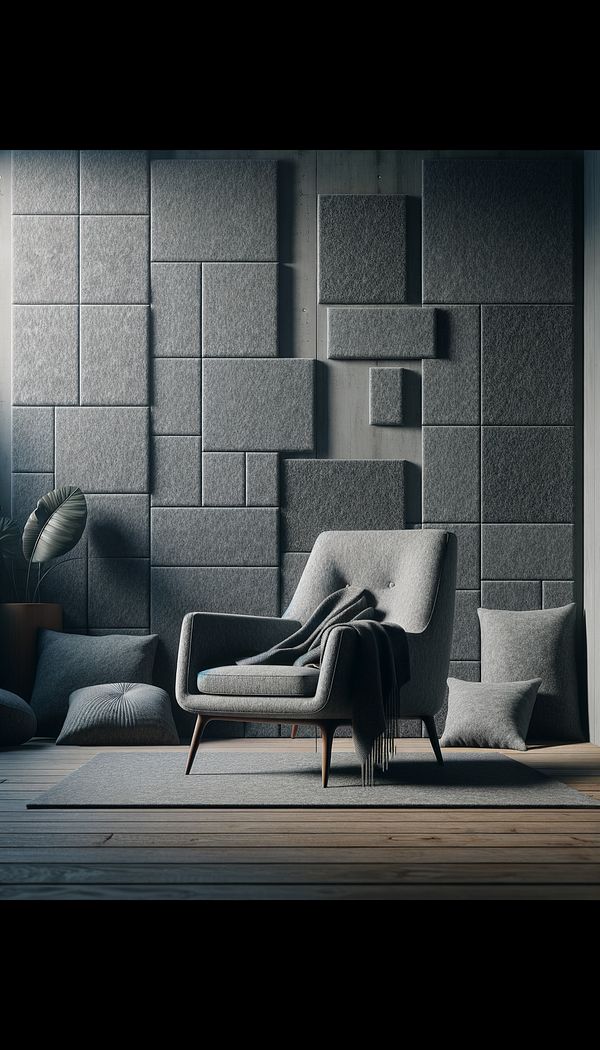What is Felt?
Felt is a non-woven fabric made from compressed and matted fibers.
Description
Felt is a unique material in the interior design world, valued both for its aesthetic appeal and functional properties. Unlike traditional fabrics that are woven or knitted, felt is created by matting, condensing, and pressing fibers together. This process results in a dense textile that is soft yet durable, capable of being both decorative and utilitarian.
Felt can be made from a variety of animal fibers, including wool, which is the most common, as well as synthetic fibers such as acrylic. The versatility of felt makes it suitable for a wide range of interior design applications, from cozy textiles and upholstery to innovative decorative objects. Its ability to be easily cut and shaped without fraying also lends itself to creative and custom designs.
Moreover, felt offers excellent insulation and sound absorption properties, making it a popular choice for wall treatments and finishes and decorative techniques. The tactile and visual warmth of felt adds depth and comfort to spaces, contributing to the overall decorating principles and elements of an interior.
Usage
In interior design, felt is used in a variety of ways. It is often seen in furniture upholstery, especially in mid century modern designs, offering a texture contrast. Wall panels and dividers made from felt not only add visual interest but also serve as sound dampening elements. Additionally, felt is used in decor items like throws, cushions, and even art installations, providing a soft, inviting texture that enhances the overall aesthetic of a space.
FAQs
-
Is felt eco-friendly?
Felt made from natural wool fibers is considered eco-friendly due to its renewable source and biodegradable properties. Synthetic felts offer different benefits, such as increased durability, but may not be as environmentally friendly.
-
How do you maintain and clean felt items?
Felt items should be carefully maintained to preserve their appearance and longevity. Dusting with a soft brush and spot cleaning with a damp cloth are recommended. For deeper cleans, professional cleaning suited to the specific type of felt is advisable.
-
Can felt be used in outdoor designs?
While traditionally felt is used indoors due to its absorbent nature, advances in material technology have led to the development of weather-resistant felts suitable for outdoor applications.
-
What are the benefits of using felt in interior design?
Felt brings a combination of aesthetic appeal, tactile comfort, and functional benefits such as insulation and sound absorption to interior design projects.
-
Can felt be dyed?
Yes, felt can be dyed into various colors, allowing for creative and customized design applications.
-
Are there different types of felt?
Yes, there are several types of felt, including wool felt, synthetic felt, and blends, each offering unique properties for various interior design uses.
Practical Application
When incorporating felt into your interior design projects, consider its texture and properties for adding depth and warmth to spaces. Use it in areas where sound absorption is desired, or as a decorative element that invites touch. Experiment with different types of felt and colors to achieve creative and personalized designs.
-
Decorative Objects240 articles
-
Decorating Principles & Elements330 articles
-
Materials & Textiles360 articles
-
Textiles & Upholstery252 articles
-
Wall Treatments & Finishes157 articles
-
BaroqueBaroque is a highly decorative and theatrical style of architecture, art, and design that originated in the early 17th century in Europe.
-
China CabinetA china cabinet is a piece of furniture designed to display and store fine china, glassware, and other collectibles.
-
Dry BrushingDry brushing is a painting technique used to create a textured effect.
-
SpatteringSpattering is a decorative painting technique that creates a speckled or textured effect.
-
Wall SculptureA wall sculpture is a three-dimensional artwork designed to be mounted on a wall.
